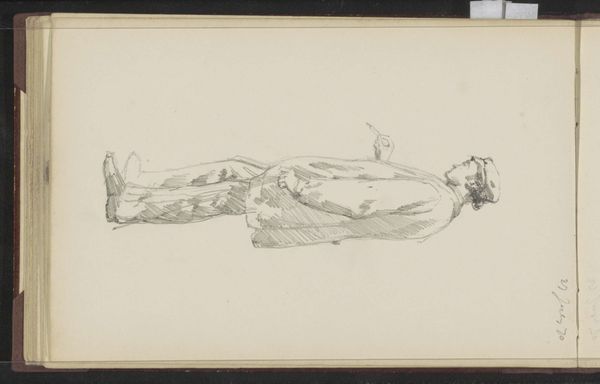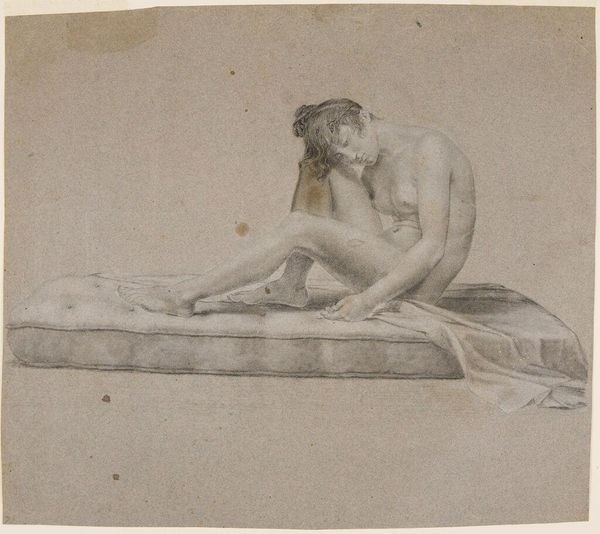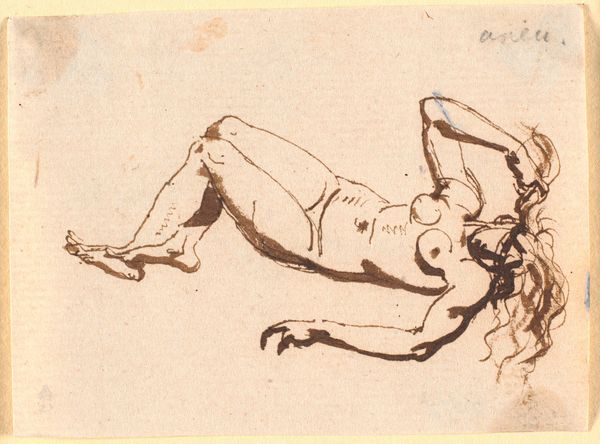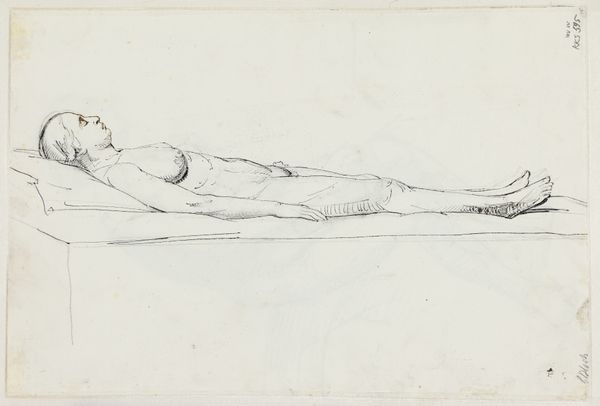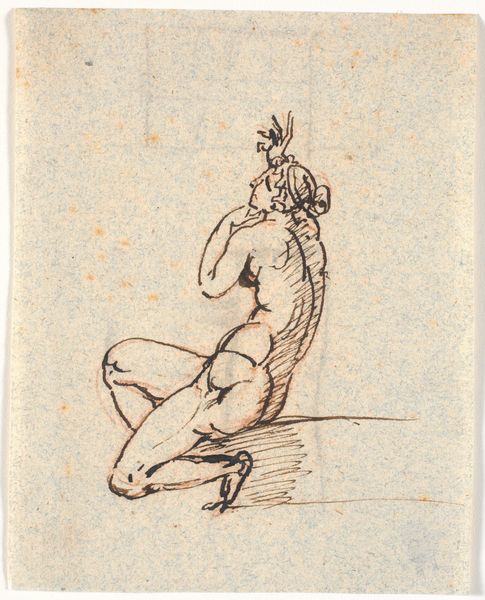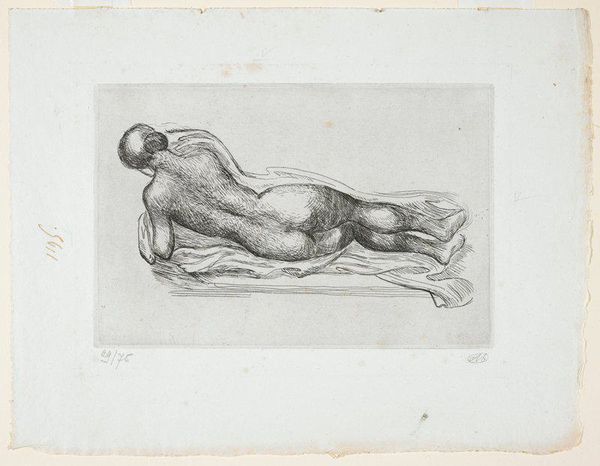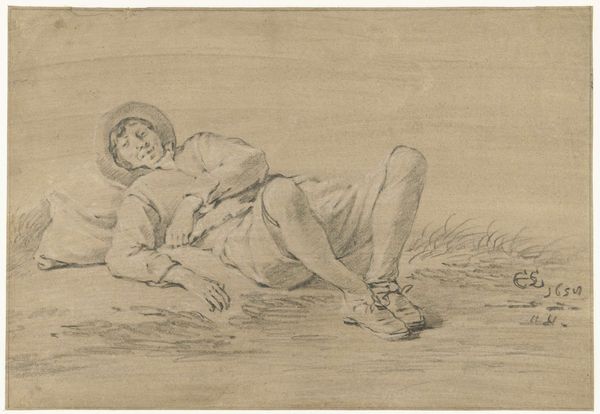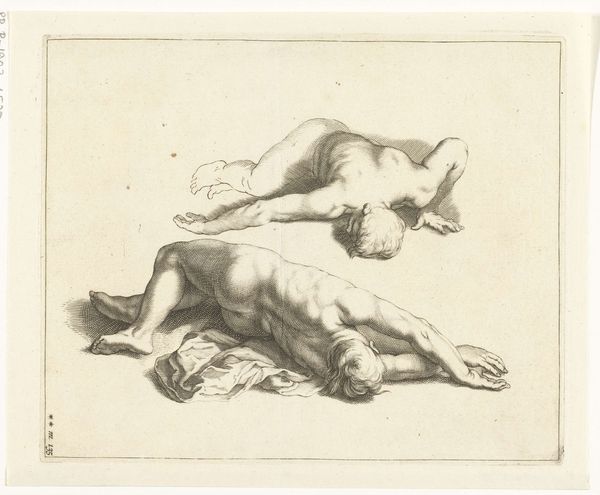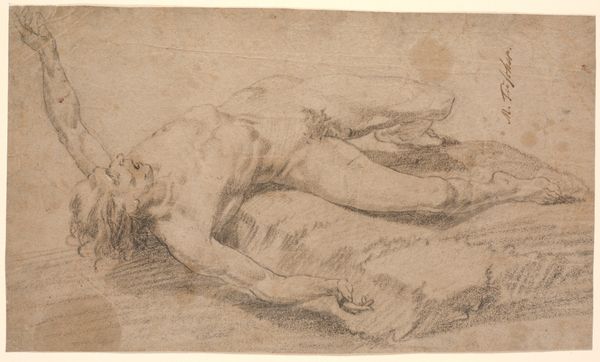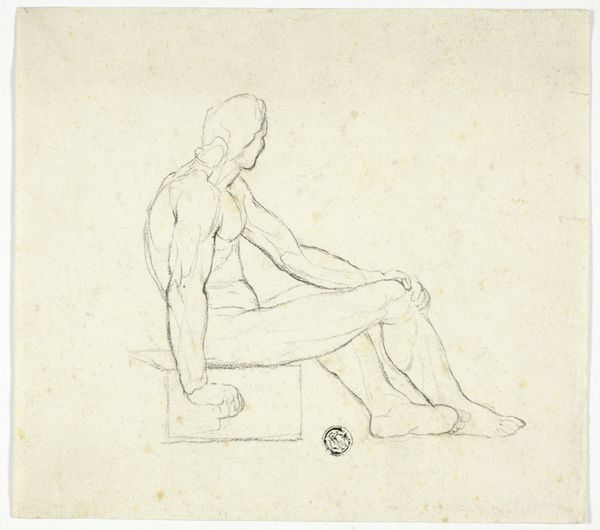
drawing, paper, ink
#
portrait
#
drawing
#
baroque
#
figuration
#
paper
#
ink
#
nude
Dimensions: height 155 mm, width 196 mm
Copyright: Rijks Museum: Open Domain
Curator: Editor: This is "Studie van de figuur van Isaac," or Study of the figure of Isaac, made in 1619 by Gerard ter Borch. It's an ink drawing on paper, and it's quite striking! I'm curious about what informed this particular drawing. What do you see when you look at it? Curator: Well, immediately I’m drawn to the raw materiality. Look at the paper itself – likely handmade, you can almost feel its texture, can’t you? And the ink! The application, the way it pools and feathers… Consider how Ter Borch acquired these materials, perhaps from a local workshop. The creation of this image is inseparable from that material reality and its broader socioeconomic implications. Don’t you agree? Editor: Absolutely, now that you mention it, I can appreciate the labour and skill behind creating the paper and the ink. However, what about the subject? Isn’t the figure of Isaac important? Curator: Indeed, but let’s delve deeper. Why Isaac? And what does his vulnerability, depicted in this pose, tell us about the societal views on the human body in 17th-century Netherlands and the relationship between labor and the body at that time? Is the subject placed centrally so we focus less on him and more on the artist's means of production? Editor: That is fascinating, how it can highlight a specific worldview of art and its socio-economical place within the society of its time! Curator: Precisely! This drawing isn't just about biblical reference. It's a record of labor, skill, and access to resources in the early 17th century. Reflecting on how we see drawing itself, in that particular socio-economic setting: was it craft, was it an artwork, was it something else? Editor: This perspective has completely changed how I see the artwork now. I appreciate that Ter Borch’s drawing of Isaac, which seemed quite simple, involved multiple stages and levels of complex work and skill. Curator: Absolutely. By exploring the process, materials, and its location of presentation within the cultural and economic environment of that time we’re really able to unveil this artwork’s cultural importance!
Comments
No comments
Be the first to comment and join the conversation on the ultimate creative platform.

